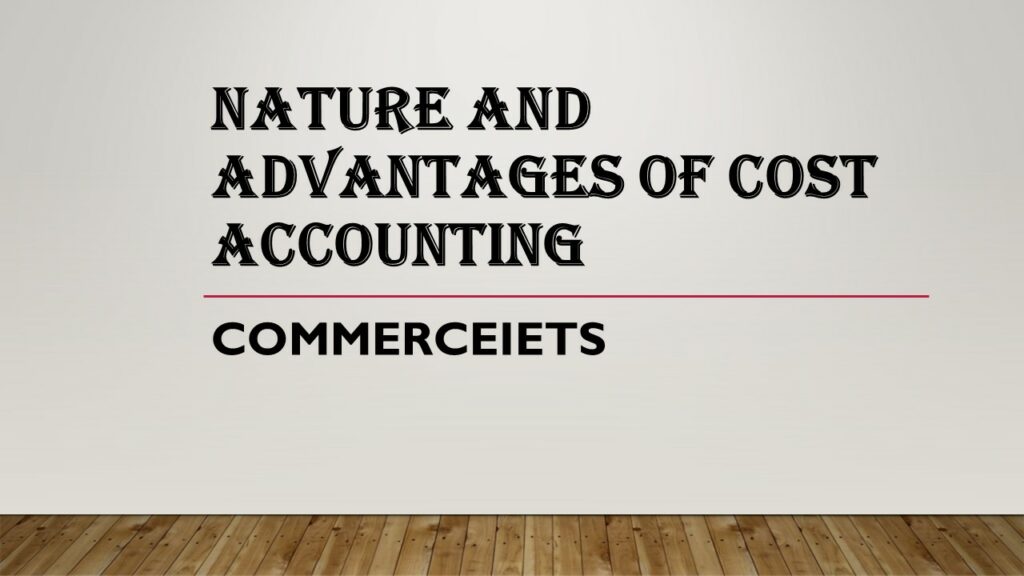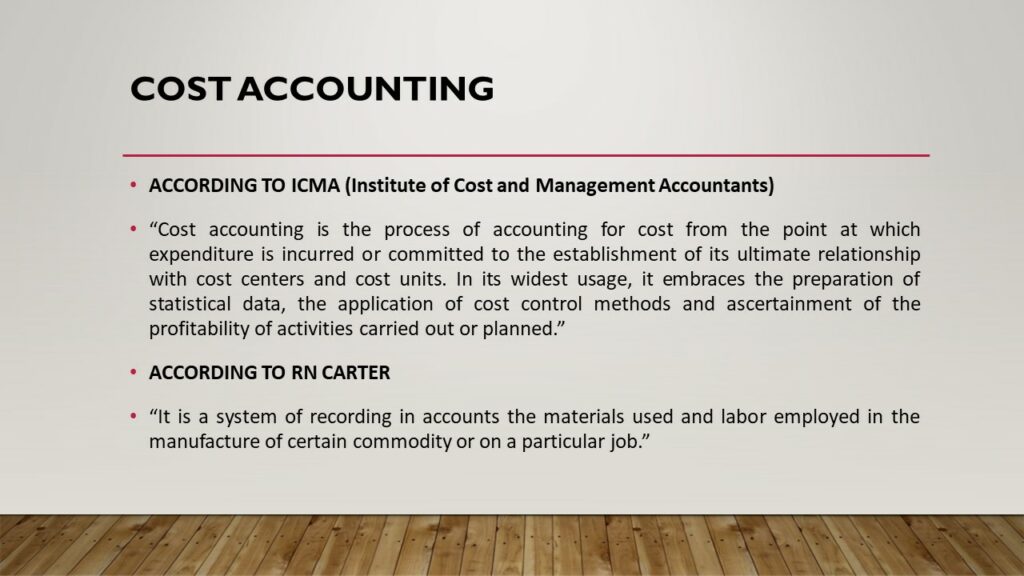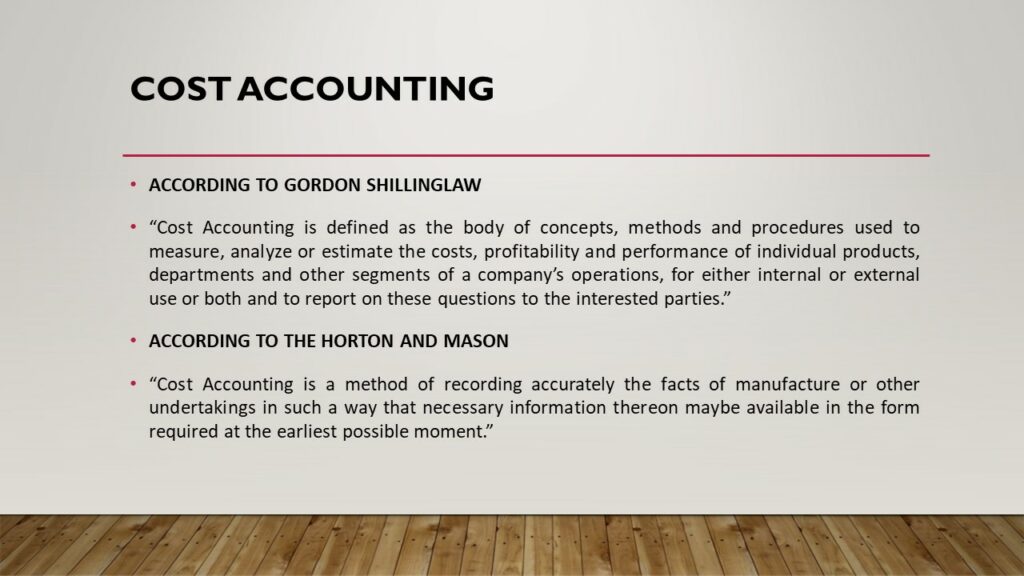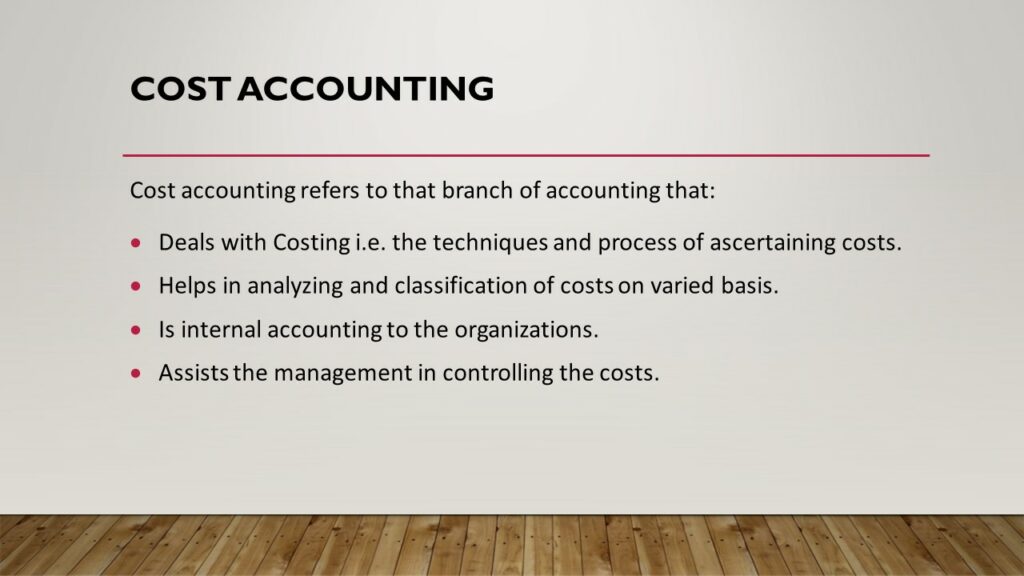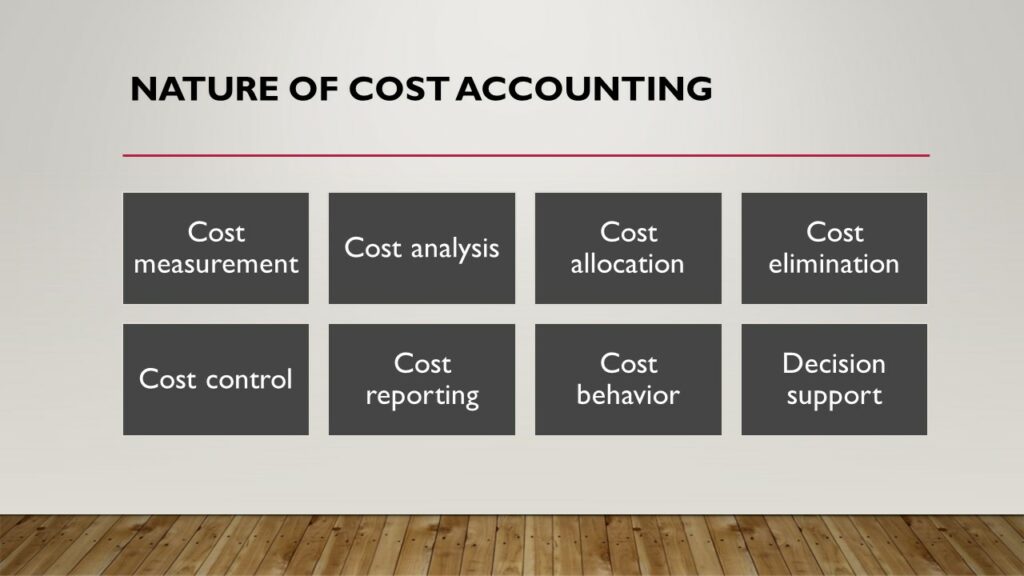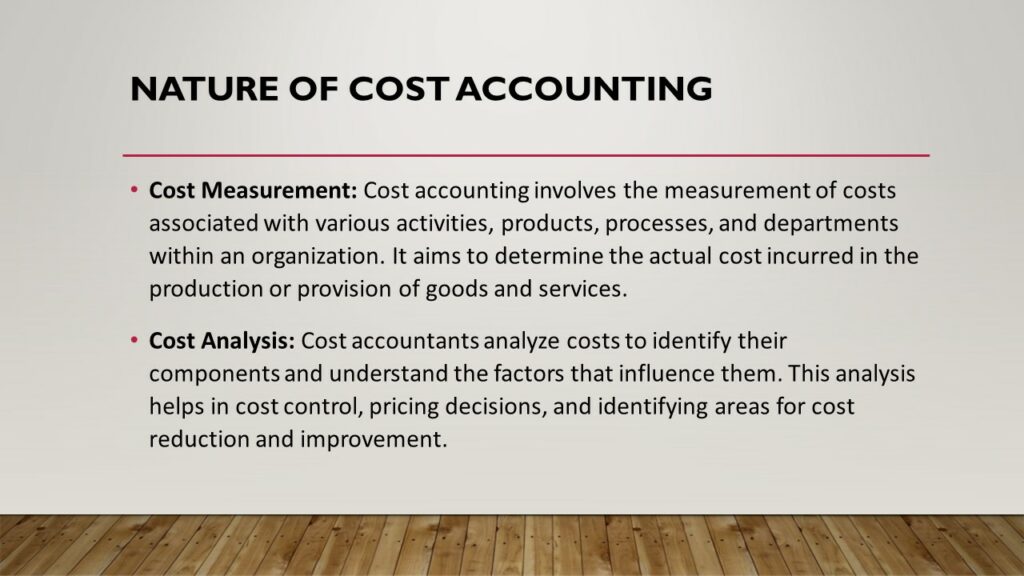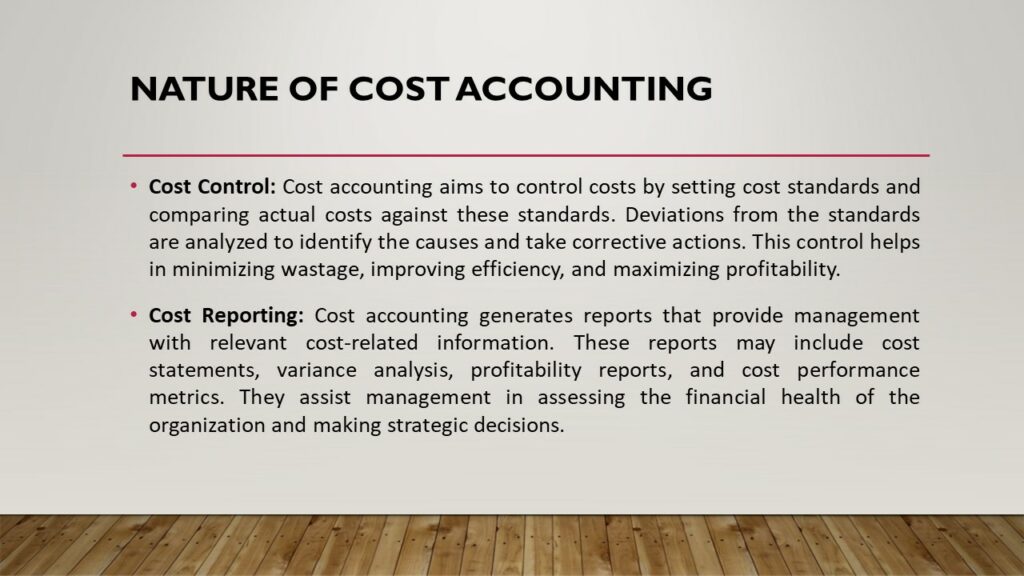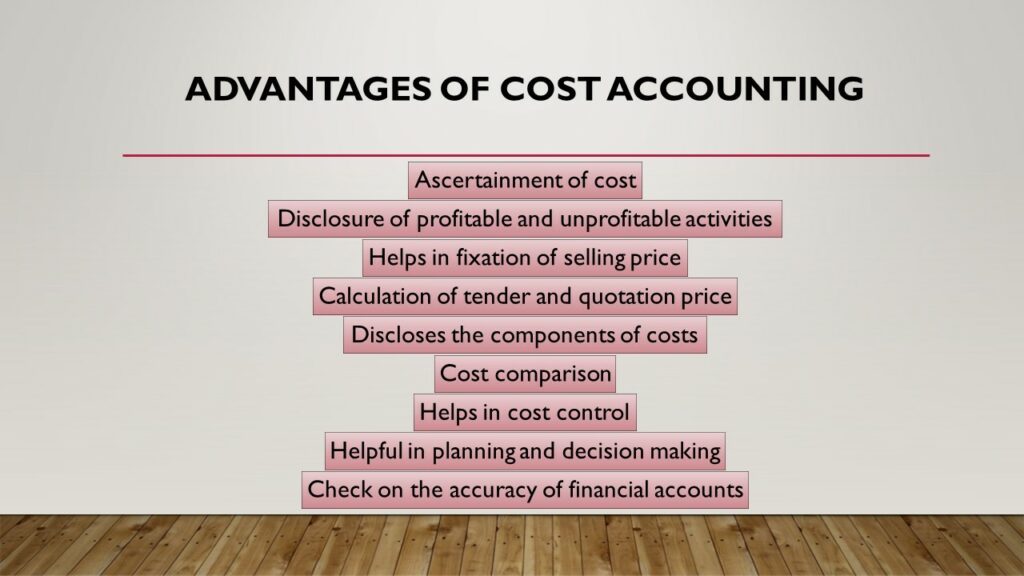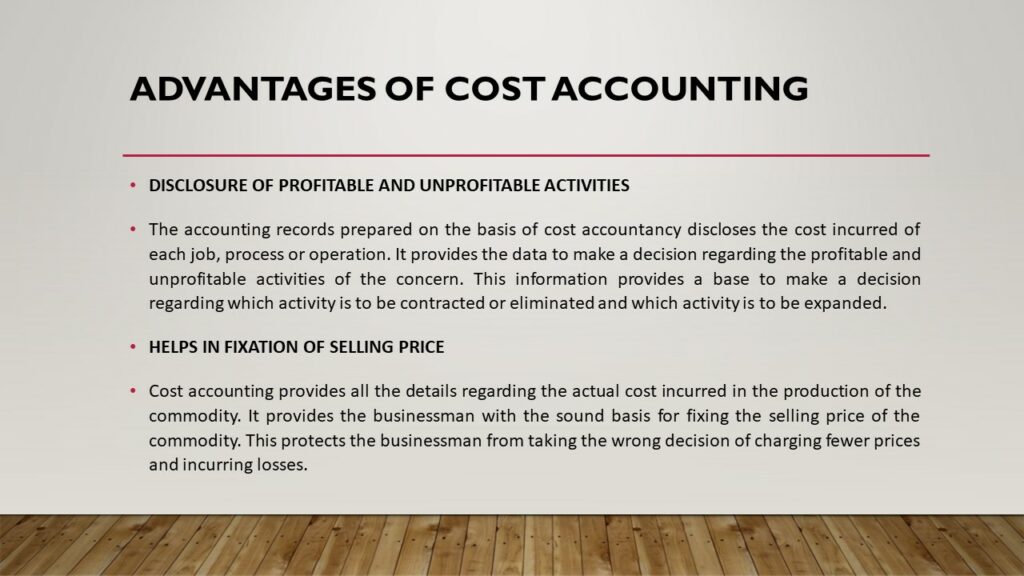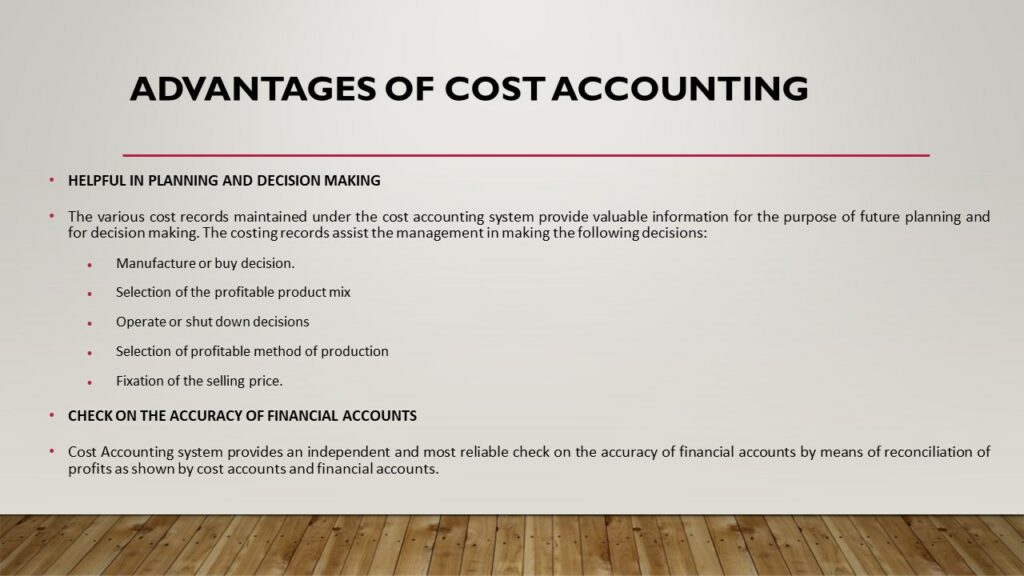Nature and Advantages of Cost Accounting
Cost Accounting is an art or process of recording, analyzing and classifying of expenditure for the purpose of product costing or service costing, ascertainment of profitability, operational planning and cost control.
It is a forward-looking approach which is related to the recording, analyzing and classifying of expenditure with the objective of ascertaining the total and per unit cost of product or service.
ACCORDING TO ICMA (Institute of Cost and Management Accountants)
“Cost accounting is the process of accounting for cost from the point at which expenditure is incurred or committed to the establishment of its ultimate relationship with cost centers and cost units. In its widest usage, it embraces the preparation of statistical data, the application of cost control methods and ascertainment of the profitability of activities carried out or planned.”
ACCORDING TO RN CARTER
“It is a system of recording in accounts the materials used and labor employed in the manufacture of certain commodity or on a particular job.”
ACCORDING TO GORDON SHILLINGLAW
“Cost Accounting is defined as the body of concepts, methods and procedures used to measure, analyze or estimate the costs, profitability and performance of individual products, departments and other segments of a company’s operations, for either internal or external use or both and to report on these questions to the interested parties.”
ACCORDING TO THE HORTON AND MASON
“Cost Accounting is a method of recording accurately the facts of manufacture or other undertakings in such a way that necessary information thereon maybe available in the form required at the earliest possible moment.”
Thus, cost accounting refers to that branch of accounting that:
- Deals with Costing i.e. the techniques and process of ascertaining costs.
- Helps in Analyzing and classification of costs on varied basis.
- Is internal accounting to the organizations.
- Assists the management in controlling the costs.
NATURE OF COST ACCOUNTING
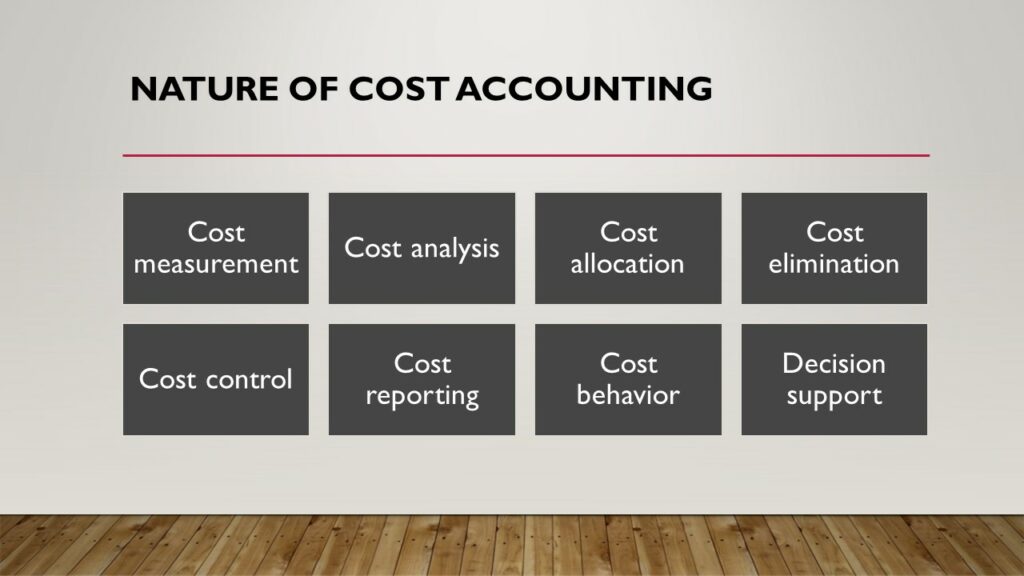
Cost accounting is a branch of accounting that focuses on the determination, analysis, and control of costs in order to improve efficiency and profitability within an organization. Its primary objective is to provide management with information for making informed decisions regarding resource allocation, cost control, and performance evaluation.
The nature of cost accounting can be summarized through the following key points:
- Cost Measurement: Cost accounting involves the measurement of costs associated with various activities, products, processes, and departments within an organization. It aims to determine the actual cost incurred in the production or provision of goods and services.
- Cost Analysis: Cost accountants analyze costs to identify their components and understand the factors that influence them. This analysis helps in cost control, pricing decisions, and identifying areas for cost reduction and improvement.
- Cost Allocation: Cost accounting allocates costs to different cost objects such as products, services, customers, departments, or projects. This allocation provides insights into the profitability and performance of individual cost objects.
- Cost Estimation: Cost accountants use various techniques to estimate costs, especially in situations where actual costs are not available. They may employ methods like historical data analysis, cost-volume-profit analysis, or regression analysis to estimate costs for decision-making purposes.
- Cost Control: Cost accounting aims to control costs by setting cost standards and comparing actual costs against these standards. Deviations from the standards are analyzed to identify the causes and take corrective actions. This control helps in minimizing wastage, improving efficiency, and maximizing profitability.
- Cost Reporting: Cost accounting generates reports that provide management with relevant cost-related information. These reports may include cost statements, variance analysis, profitability reports, and cost performance metrics. They assist management in assessing the financial health of the organization and making strategic decisions.
- Cost Behavior: Cost accounting recognizes that costs behave differently under various conditions. It categorizes costs into fixed costs, variable costs, semi-variable costs, and mixed costs. Understanding cost behavior helps in planning, budgeting, and forecasting activities.
- Decision Support: Cost accounting provides information for decision-making processes such as pricing, make-or-buy decisions, product mix decisions, and capital investment decisions. It assists management in evaluating the financial implications of alternative courses of action.
Overall, the nature of cost accounting revolves around the systematic recording, analysis, and interpretation of costs to facilitate effective decision-making, cost control, and performance management within an organization.
ADVANTAGES OF COST ACCOUNTING
Cost Accounting system renders invaluable services to the manufacturers, management, employees, investors, consumers and government. The various advantages of cost accounting are as follows:

- ASCERTAINMENT OF COST
The sphere of cost accounting comprises cost ascertainment firstly. Cost ascertainment means determining the cost incurred in producing any product. The cost ascertainment includes:
- Collection of expenses
- Analysis of expenses
- Measurement of production
The cost may be ascertained by following ways:
Activity Based Costing in which each activity is taken as fundamental cost object.
Unit costing which is adopted to ascertain the total cost and also per unit cost by making a detailed analysis of different elements of cost.
Job Costing method as per which costs is ascertained for the particular job or work.
Batch Costing which is used when products are produced in batches and cost is ascertained for each batch separately.
Contract Costing is a method of cost ascertainment of a particular contract which is non-recurring in nature. The person executing the contract is known as ‘contractor’ and the person with whom the contract is executed is known as the ‘Contractee’.
Process Costing is a method employed to ascertain the cost of production in industries where a product passes through different processes or stages.
Operation Costing represents the costing in which each cost of each operation involved in an activity is ascertained separately.
Composite Costing is applied to ascertain the cost of complex products manufactured by the manufacturing concerns where no single method of ascertaining cost can be applied.
Departmental Costing is adopted where the factory is divided into several departments and it is desired to ascertain the cost of each department than the whole concern collectively.
2. DISCLOSURE OF PROFITABLE AND UNPROFITABLE ACTIVITIES
The accounting records prepared on the basis of cost accountancy discloses the cost incurred of each job, process or operation. It provides the data to make a decision regarding the profitable and unprofitable activities of the concern. This information provides a base to make a decision regarding which activity is to be contracted or eliminated and which activity is to be expanded.
3. HELPS IN FIXATION OF SELLING PRICE
Cost accounting provides all the details regarding the actual cost incurred in the production of the commodity. It provides the businessman with the sound basis for fixing the selling price of the commodity. This protects the businessman from taking the wrong decision of charging fewer prices and incurring losses.
4. CALCULATION OF TENDER OR QUOTATION PRICE
Tenders or quotations are made to provide the rate which will be charged to supply the manufactured goods in future times. The cost data provides a useful base to set the tender price. If the tenders are based on the actual cost data, they are bound to be competitive and sure to be accepted by the prospective customer.
5. DISCLOSES THE COMPONENTS OF COSTS
To manufacture a product, the cost is incurred on material, labor and overheads. Cost accounting records
- Wage rate payable to efficient or inefficient employees
- Material ordering costs
- Material carrying costs
- Overtime cost, etc
All this minute information assist the manufacturer to ascertain the importance of each element of cost and determining where there is greater scope for the economy.
6. COST COMPARISON
The accounting records of cost of one year can be compared with the records of another year. The cost accounting system provides the reliable information to compare the costs of different periods, for different volumes of output, in different departments or processes and in different establishments.
7. HELPS IN COST CONTROL
Cost control is the guidance and regulation of the costs by the administration and management authorities. It guides the organization to achieve the target of the undertaking for a given period. Cost control involves the following steps:
- Setting up the targets for expenses and production performance
- Measurement of the actual performance
- Comparison of the actual performance with the standard performance
- Finding out deviations, if any
- Taking corrective actions to remove all the deviations.
Cost control is done by following the various techniques:
Marginal Costing: It is a technique of cost accounting which pays attention to the behavior of costs with changes in the volume of the output.
Budgetary Control: It involves the establishment of budgets relating to the responsibilities of the executives to the requirements of the policy and the continuous comparison of the actual with the budgeted results, either to secure by individual action of that policy or to provide a basis for its revision.
Standard Costing: Standard costing discloses the cost of deviations from standards and classifies these as to their causes, so that management is immediately informed of the sphere of operations in which remedial action is necessary.
Variance Analysis: Variance analysis is a process of analyzing variances by sub-dividing the total variance in such a way that the management can assign the responsibility for off production performance. The main cost variances are: direct material variance, direct labor cost variance and overhead variance.
8. HELPFUL IN PLANNING AND DECISION MAKING
The various cost records maintained under the cost accounting system provide valuable information for the purpose of future planning and for decision making. The costing records assist the management in making the following decisions:
- Manufacture or buy decision.
- Selection of the profitable product mix
- Operate or shut down decisions
- Selection of profitable method of production
- Fixation of the selling price.
9. CHECK ON THE ACCURACY OF FINANCIAL ACCOUNTS
Cost Accounting system provides an independent and most reliable check on the accuracy of financial accounts by means of reconciliation of profits as shown by cost accounts and financial accounts.
